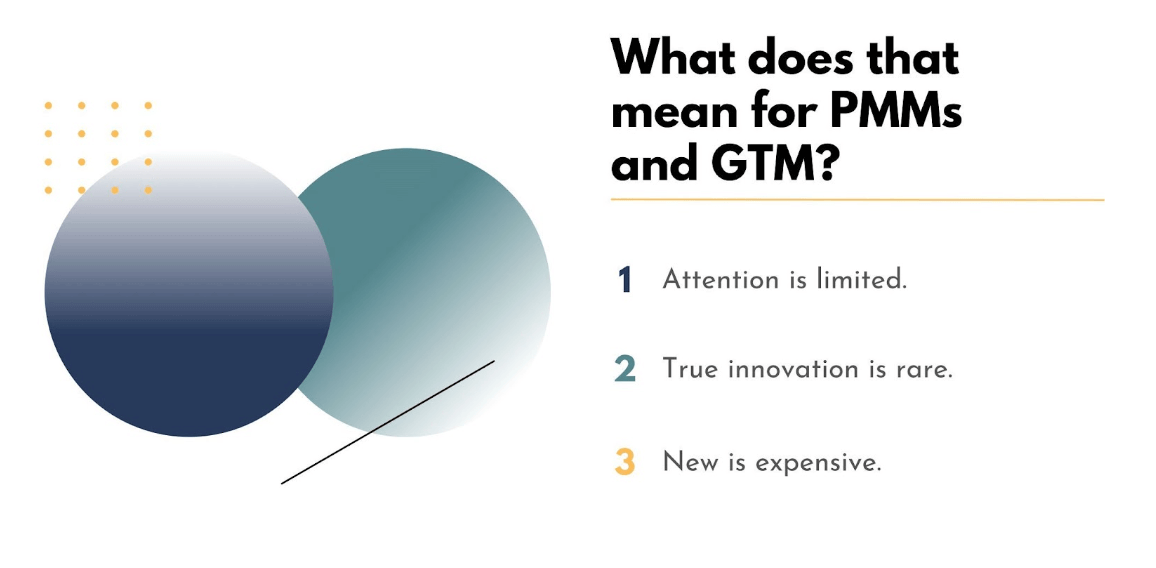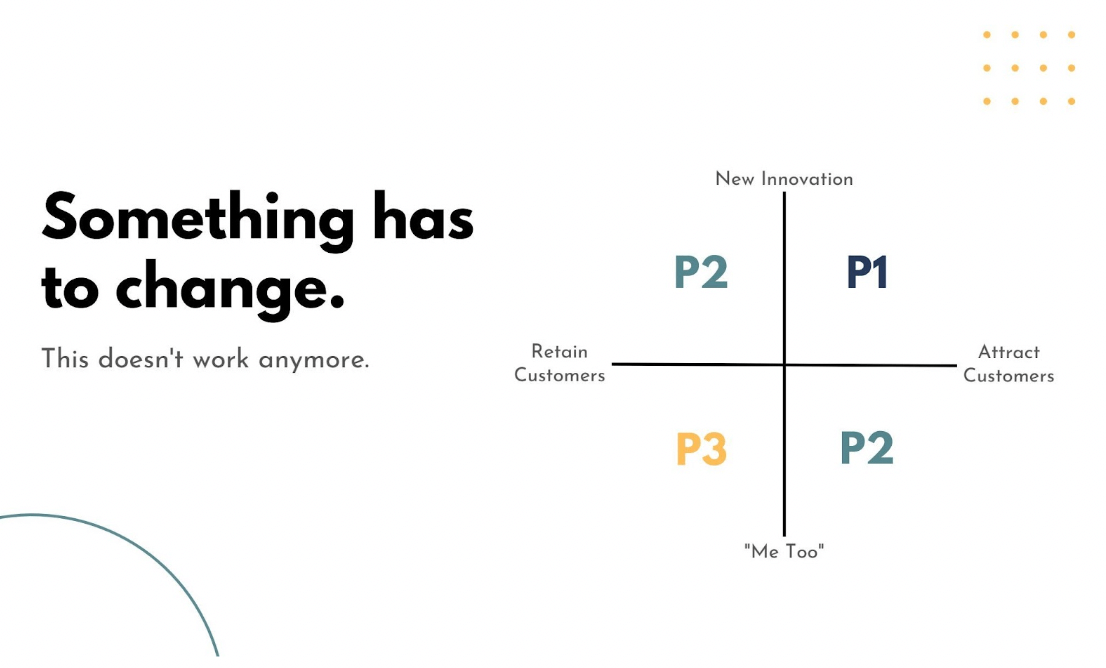This article is based on Mark’s brilliant talk at the Product Marketing Summit in Toronto, in 2022. Product Marketing Alliance members can watch it in its full glory here.
In case you hadn’t guessed, I’m a bit of a product marketing nerd. I firmly believe product marketing is among the most exciting and dynamic fields in marketing, if not in all of tech. That's why I'm thrilled to share my learnings from this field today.
I’m going to share how product marketing can prioritize go-to-market activities, not just in crowded markets, but in any organization where products are being launched continuously.
Many of us have been in the position of supporting multiple product teams – sometimes three, four, or even five of them – single-handedly.
When you're constantly being bombarded with releases (sometimes at the very last minute!) it can be hard to decide how much attention you or your organization should allocate to each one. I’m going to provide a framework to help you tackle this problem.
In this article, I'll focus on:
- The challenges of crowded markets
- Why old frameworks need to be replaced
- A GTM prioritization framework
- How to quantify business value
- How to quantify customer value
- Who should be involved with prioritization frameworks
- The other keys to priority alignment
The challenges of crowded markets
Now, you’ve probably heard this a thousand times, but markets are crowded. This is a universal challenge. Take martech companies for example – there are over 8000 of them.
Can you imagine trying to compete in that arena? It's a monumental task to stay on top of not only your own strategies to remain competitive but also your competitors' activities. There's just so much going on.

This has several significant implications for us as product marketing managers. The first and most important is that customer attention spans are incredibly limited.
I’m willing to bet that you, in your life as a customer, have companies sending you updates about their latest features or improvements every week, or even multiple times a month. It can be overwhelming, can't it?
Now, put yourself in your customers' shoes. Imagine how they must feel about receiving five or six updates about new functionalities or products from your company every month.
They’re probably also subscribed to updates, releases, and newsletters from your competitors. How can they possibly stay on top of it all? And how can you keep them engaged and willing to listen to you amidst all the noise?
Another challenge is the scarcity of true innovation in crowded markets. By "true innovation", I mean something entirely new – something the market or category has never seen before.
Most of the time, we're playing catch-up, offering functionalities to match our competitors and stay in the game. It's rare to go to market with a never-before-seen product or feature unless you're a market leader who can afford to take significant risks – not all of us are that fortunate.
On top of all this, introducing something new is costly. Customer acquisition costs have been steadily rising, not just due to increased competition, but also because the channels we use to reach new customers know the demand for their services is high, so they charge more.
All of this leads us to a critical question: is it time to end our relentless focus on growth?
Of course, to some extent, constant growth is essential – that's how businesses thrive. But something has to give. Perhaps, instead of focusing solely on growth, we should concentrate more on keeping our current customers happy with features that will secure their loyalty in the long run.
Out with the old…
If you’ve been in product marketing for a while, you’ve probably come across Intercom’s rubric for prioritizing product announcements.
You know the one – you have a horizontal axis with “retain customers” at one end and “attract customers” at the other end, then there’s a vertical axis with “new innovation” at the top and “‘me too’ feature” at the bottom, and the priority you give to your launch depends on where it falls on this rubric.

Well, no offense to the folks at Intercom who developed it, but I don’t think this framework is relevant anymore.
It was introduced in 2016, back when the SaaS space wasn't as competitive as it is today. It served us well then, but I think it falls short in a couple of crucial areas today.
First, this framework prioritizes acquiring new customers over retaining existing ones.
Given the rising costs of customer acquisition, can we definitively say that acquiring customers is inherently more important than retaining them? Not always.
It depends on the stage of your company's growth, the maturity of the market, and the intensity of competition within the market. So, treating customer acquisition as more important than retention might be a bit of a misstep.
Second, this framework fails to focus on the customer. As product marketers, we have it drilled into our heads that we need to be customer-obsessed at all times. When you apply a model that doesn't factor in the impact on customers, you may inadvertently set yourself up for failure.
Remember, customers aren't always swayed by the latest shiny object. They eventually grow numb to the constant bombardment of new and exciting features. What matters is the value the customer derives from your product or service, and Intercom’s framework doesn’t focus on that nearly enough.
Lastly, in a market with rampant competition, it’s challenging to keep generating new, groundbreaking ideas.
You probably got into product marketing because you wanted to do exciting things like launch groundbreaking products and features, but how often will you genuinely have the opportunity to do that? Does it really make sense to build your whole prioritization framework around those once-in-a-blue-moon launches?
Personally speaking, I got into product marketing because I wanted to be part of exciting go-to-market launches. If I join a company and find out that I might only get to work on a top-priority launch every few years, it takes away some of the fun of the go-to-market process.
I believe we deserve better. We deserve a framework that provides ample opportunities to get excited about the go-to-market activities we're spearheading while maintaining a customer-focused lens.
More importantly, our customers deserve better. We don't want to run go-to-market motions simply to keep product teams off our backs or because senior leadership might wonder why we're not showcasing anything new. Ultimately, our actions need to resonate with our customers – otherwise, what's the point?
… and in with the new GTM prioritization framework
I propose it's time for a new framework – one that prioritizes both customer value and broader business value.


 Follow us on LinkedIn
Follow us on LinkedIn
